The Gardens of Greywalls: A Scottish masterpiece bearing the imprint of Lutyens and Jekyll
'Within a mashie-niblick' of the 18th green at Muirfield Golf Club lies a garden of great beauty and history, as James Truscott explains.

‘If only walls could talk.’ Nowhere does this seem more appropriate than in the gardens of Greywalls, East Lothian, where the walls themselves are key to the gardens’ history and origins, their innate character and continued survival. Not only do they nurture and enclose the garden from the salt-borne easterlies but also, as if choreographed by a master playwright, they reveal their story to the audience only one scene at a time until at last, in the final act, the whole plot is laid bare.
The master playwright in question was Sir Edwin Lutyens whose designs for the garden were planted by Gertrude Jekyll. At Greywalls, unity of design is enhanced by the use of the local honey-coloured ‘rattlebags’ stone to construct both house and garden walls; and it is the grey Dutch pantiles used on the roof and the copes of the walls which give the ‘grey’ to Greywalls.

Greywalls, which was described by Sir Lawrence Weaver in his 1913 book Houses and Gardens by Sir Edwin Lutyens as ‘…a small, albeit dignified, holiday home’ was built in 1901 for the Hon. Alfred Lyttelton, a keen golfer determined to live ‘within a mashie niblick shot of the eighteenth green at Muirfield’. At seven acres, it was a small plot of land by Edwardian standards, but Lyttelton wanted to create the feel of a big estate.
The illusion of space begins at the front gate where an external anteroom reveals the choice of two gateways, each at 45 degrees to the bemused visitor, with a large footman’s house to the fore and a smaller lodge either side. This immediately gives the impression of entering large scale grounds, based upon the (erroneous) assumption that these extend as far to the right as to the left. It probably appealed to Lutyens’ whimsical sense of humour to think of confused first-time visitors taking the right-hand entrance by mistake and ending up at the garage.
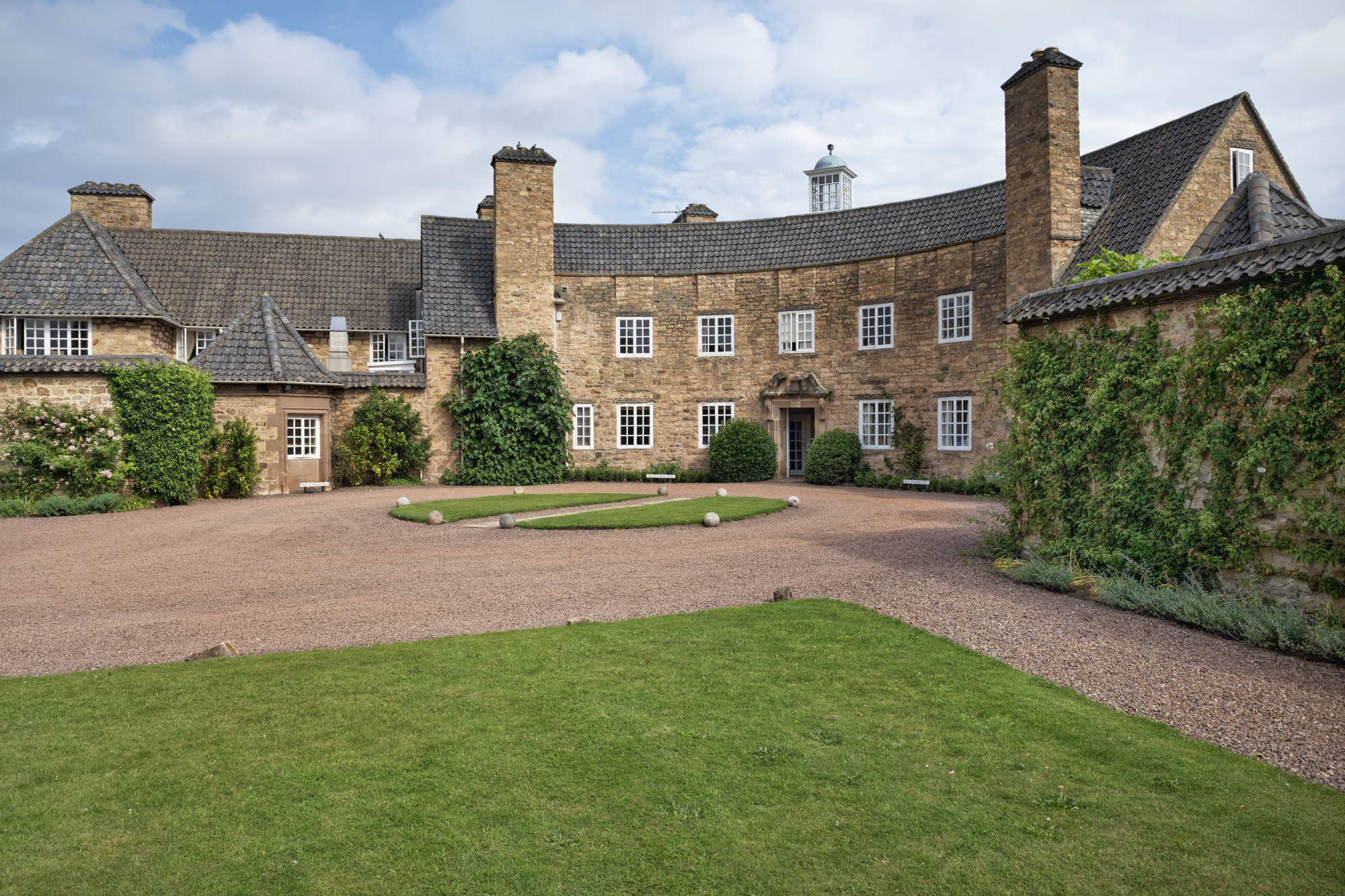
However, taking the left hand gateway leads into a large circular courtyard, which, like a huge open stage, is surrounded by gated stone walls with a grass lawn bisected by a central graveled driveway. This leads the eye straight to the front door of the two-storey stone house which, with its concave frontage, appears to form an integral part of the circular stone walls which enclose and contain the space.
The elegant simplicity of this entrance courtyard garden with gateways to both the left and the right, once again gives the illusion that the grounds extend equally on both sides whereas in fact all that lies to the left is the former gardener’s cottage. Although Lyttleton’s grandiose ambitions for Greywalls were amply realised by Lutyens, the MP’s tenure there was relatively short and in 1905 it was sold to Scottish socialite Evelyn Forbes and American husband William Dodge James. One of their most famous guests was Edward VII, hence the nickname given to one of the rooms overlooking the garden: the King’s Loo.
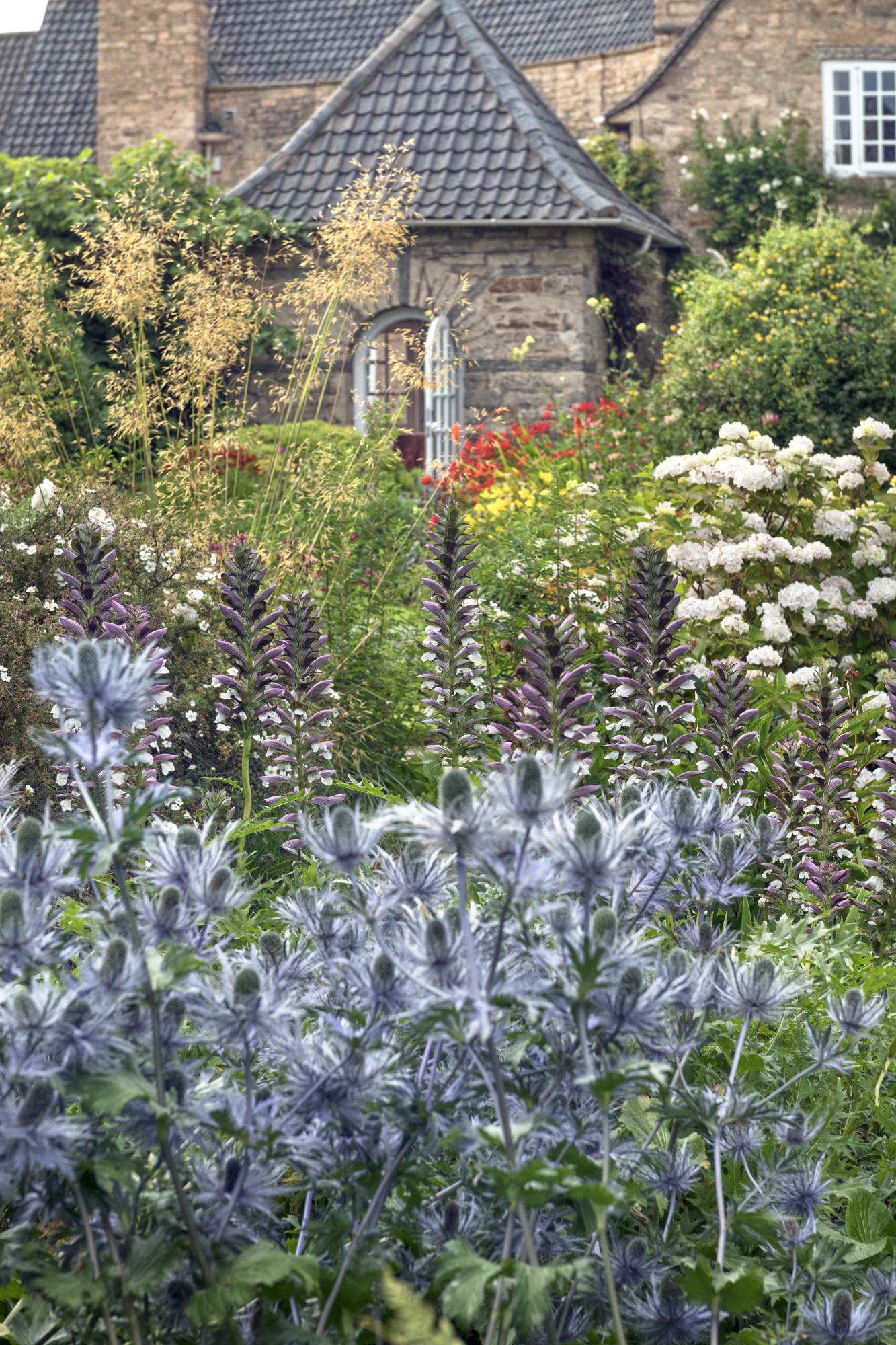
The gardener’s cottage is now the home of Jo and Dominic Hoar, daughter and son-in-law of Ros and Giles Weaver, with whom they now own Greywalls jointly. They inherited the house from Giles’ parents, Colonel John Weaver and his wife Ursula, who converted it into an hotel in 1948 and so it remains to this day. Ros still manages the garden, but the hotel is run by a management company, with Albert Roux looking after the catering. Giles grew up at Greywalls and recalls happy childhood memories of playing in the gardens. A fellow traveller from those days is a pet tortoise that was won at a fair in 1926 and, despite frequent breaks for freedom, still lives in the garden to this day.
Exquisite houses, the beauty of Nature, and how to get the most from your life, straight to your inbox.
Behind the house lies a small sunken lawn which is open to the elements and has panoramic views of Muirfield Golf Course and the Firth of Forth. It acts as a perfect foil to the enclosure of the walled gardens.
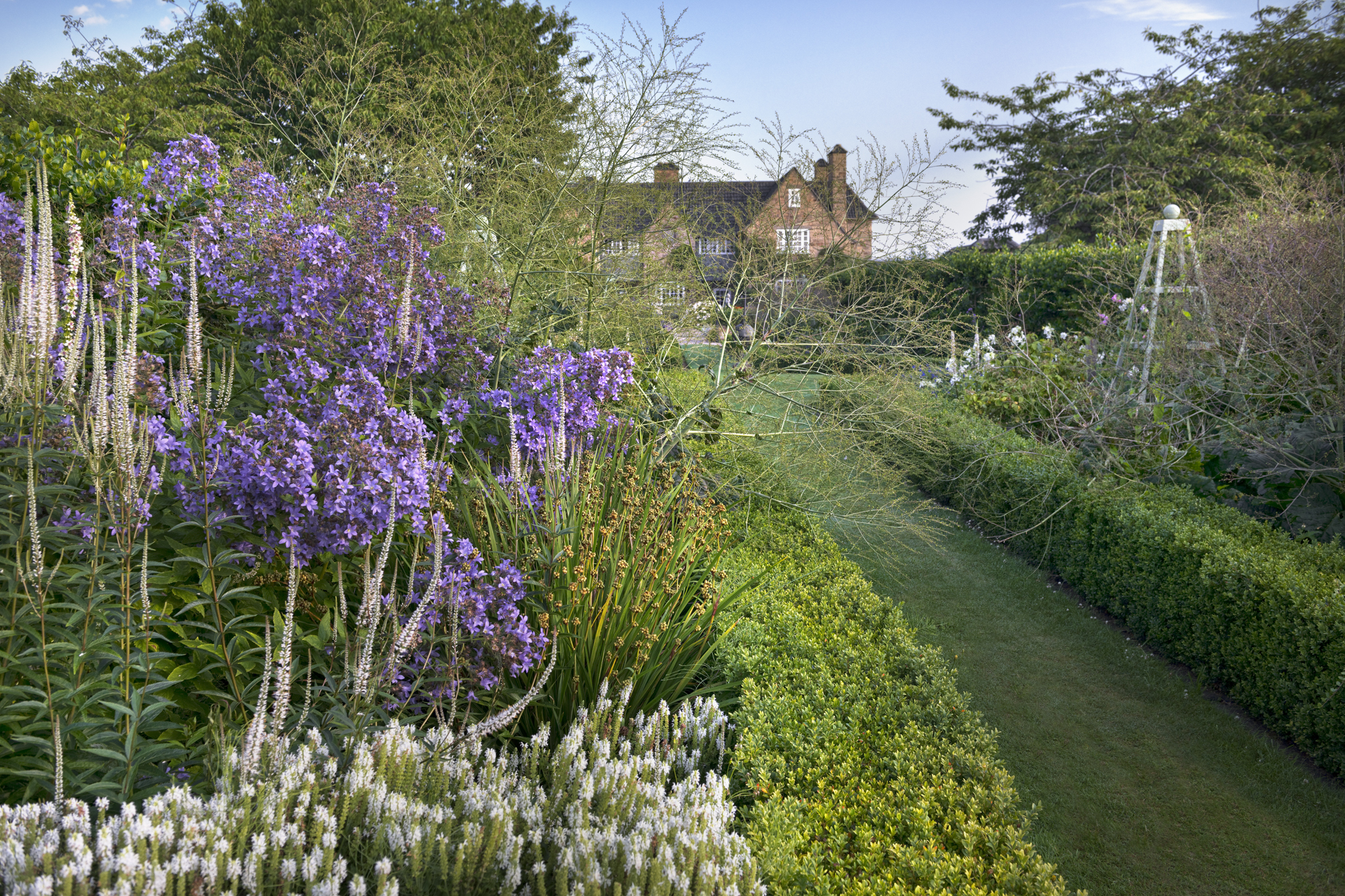
Inspiring feelings of curiosity and anticipation, the delights of the main gardens at the front of the house are finally revealed through a gateway from the courtyard, wherein lies the main parterre. The rose garden was replanted by Ursula Weaver in the 1950s to re-create Jekyll’s original design, but the roses suffered from ill-health and did not provide all-year colour and in 2001 were removed and replaced by a mixed planting. Adhering to Jekyll’s principles of hot colours in the centre and cooler ones at the edges the centrepieces are Clematis tangutica ‘Bill Mackenzie’ scrambling up trellis obelisks, surrounded by the magnificent red-flowered Helenium ‘Moerheim Beauty’ and Penstemon ‘Port Wine’, the orange flowered Rudbeckia ‘Goldsturm’ and Crocosmia ‘Lucifer’, with contrasting white-flowered Paeonia ‘Duchesse de Nemours’, and Hebe rakaiensis, silvery-foliaged Santolina chamaecyparissus, and Stachys lanata at the edges. Sculptural flourishes are added on either side by Acanthus mollis and the ornamental grass Stipa gigantea.
The central garden axis — a stone-flagged path and an herbaceous border-edged grass alléé — runs to the far (south) end of the garden revealing the climax of the final act — a masonry clairvoyéé with its elliptical ‘Oeil de Boeuf’ opening encapsulating a breathtaking view of the Lammermuir Hills beyond, its seat sheltered under a pitched roof of grey pantiles. It is framed by a pair of yews, and the pink rose ‘American Pillar’ rambles up the stonework. The box-edged herbaceous borders of violet-blue Campanula lactiflora ‘Prichard’s Variety’, the white flowering spikes of Veronicastrum virginicum ‘Alba’, the fragrant lavender-blue flowers of Verbena bonariensis and Salvia ‘Cambridge Blue’ punctuated with the sculptural shapes of Crambe cordifolia, with its fluffy billows of small white flowers, all lead the eye up to the clairvoyéé.
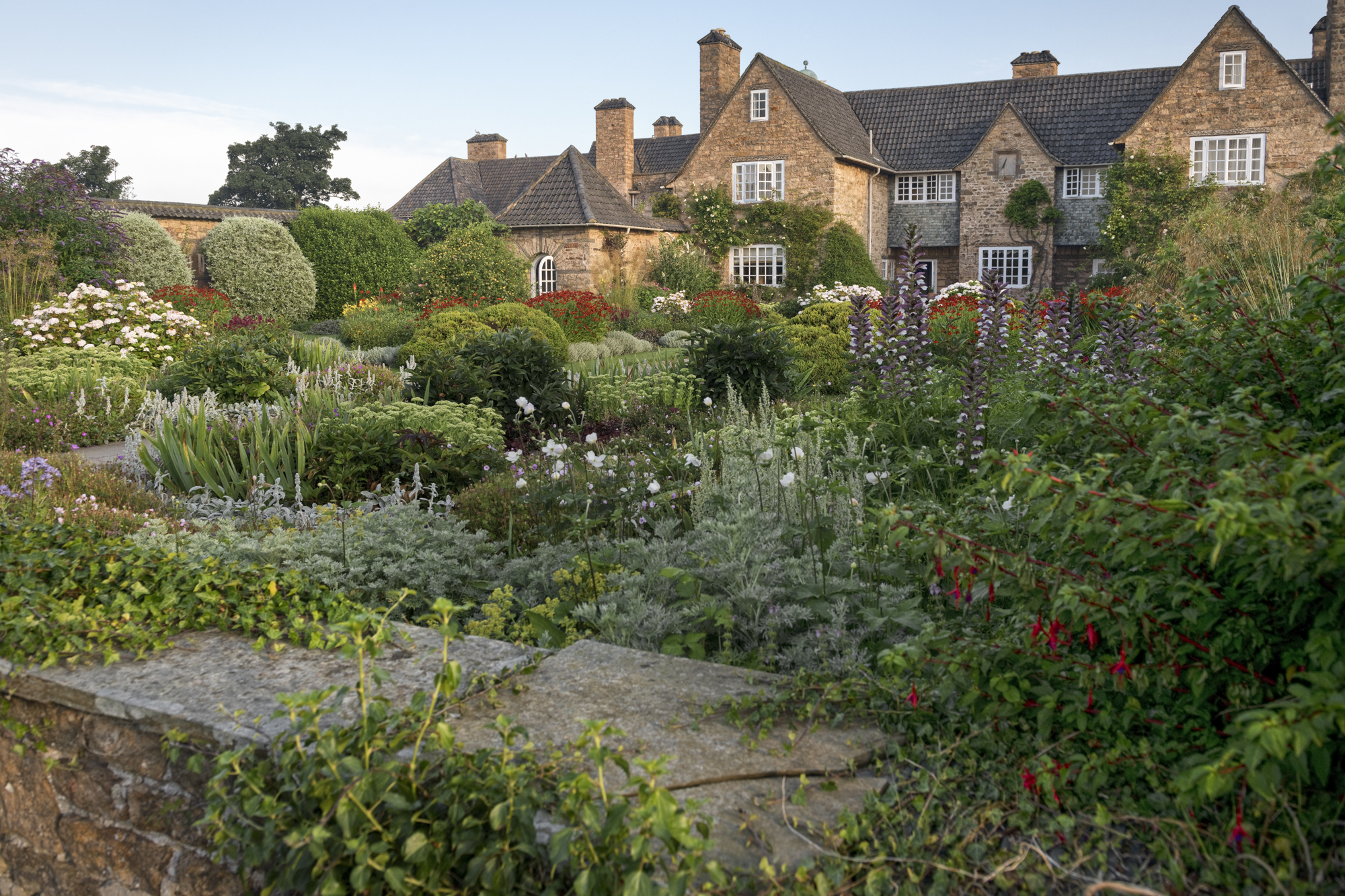
Either side of the main axis are four holly-hedged garden rooms — each enclosing a small sculpture — and, until recently, a mature cherry tree. However, two of these have had to be taken down and the fate of the remaining two are under debate. The holly hedges have had to be heavily pruned and there is discussion about introducing colour-themed beds in each of these with the improved light levels if the remaining two trees are removed.
On the east side of the garden the old vegetable plot is now a ‘wild garden’ with orchids, fritillary, and native wildflowers in abundance, clustered around a sundial designed by Mr Weaver. The nearby greenhouses are still productive, however; producing cut flowers for the hotel and annuals for the garden.
The garden remains the responsibility of the Weaver family and for the last eight years it has been in the capable hands of gardener Neil Davidson. Although they try to maintain the spirit of Jekyll’s original planting, on the thin, sandy soils and with salt-laden east winds often damaging early growth despite the protection of the walls, it is always trial and error as to which plants will grow successfully. But the Weaver family, keen to preserve the original spirit of the Lutyens/Jekyll garden, continue to maintain a nice balance between conservation and pleasure.
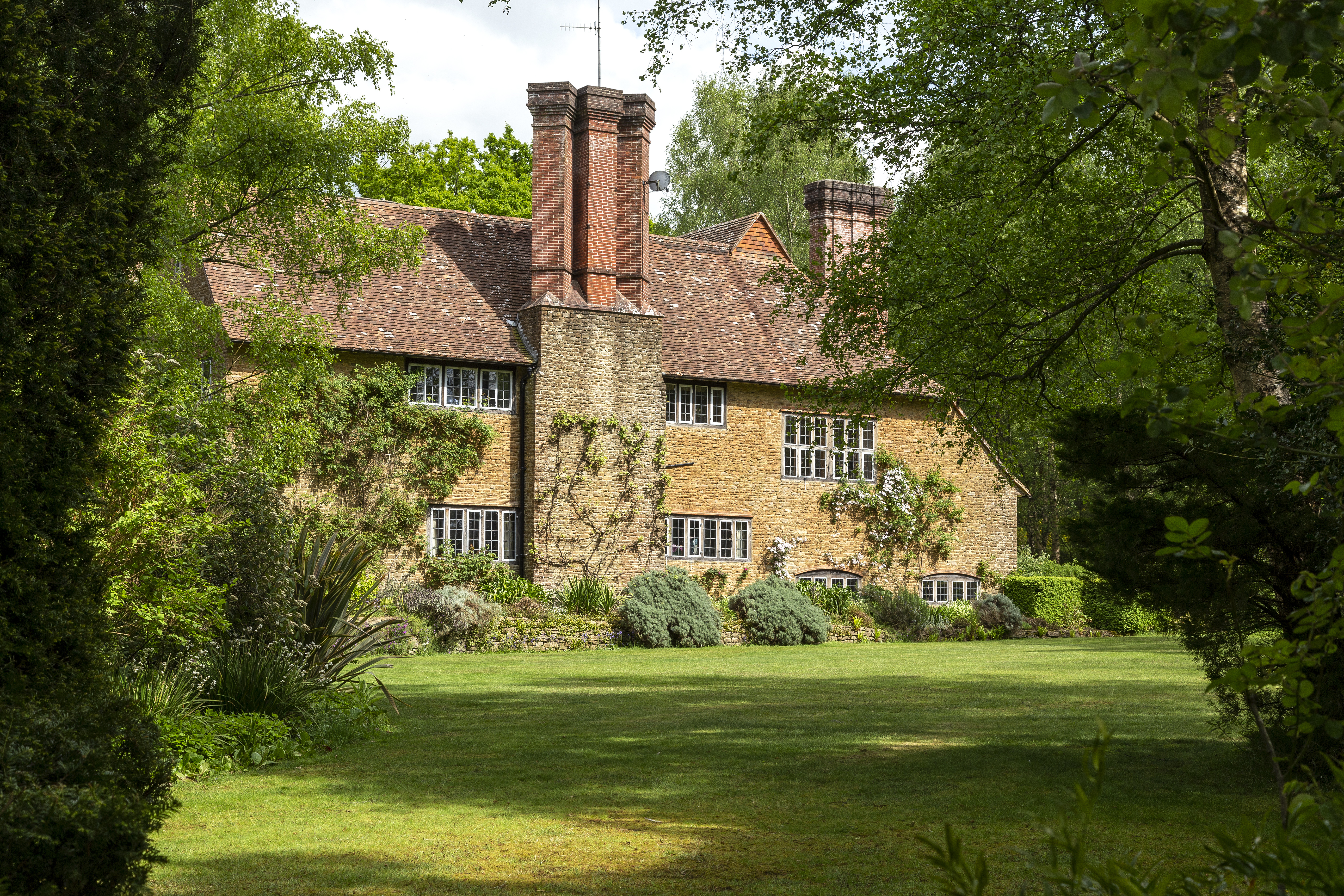
Credit: Peter Wright Photographer/Knight Frank
One of Lutyens 'most important country houses' — and the former home of Gertrude Jekyll — is up for sale for the first time in over 50 years
The Surrey Hills is very much Lutyens and Jekyll territory, notably at their first-ever collaboration at the garden designer’s home,

Charles Quest-Ritson: English gardens are the envy of the world, but the countryside is even greater
Reminiscing on an encounter with a group of garden tourists gives our columnist pause for thought about the nature of
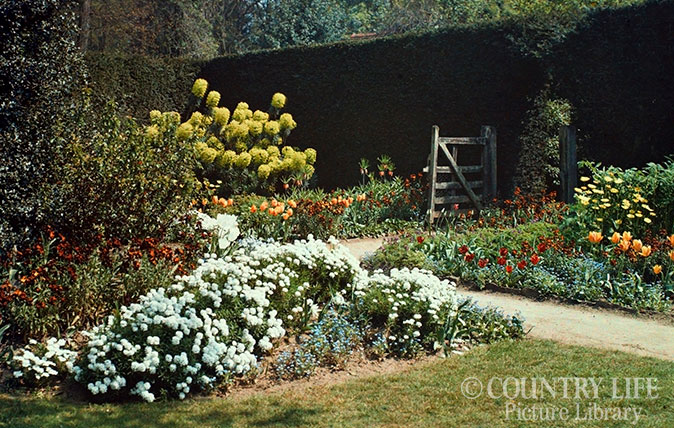
Credit: Gertrude Jekyll's garden at Munstead Wood - photographed in 1908 (©Country Life Picture Library)